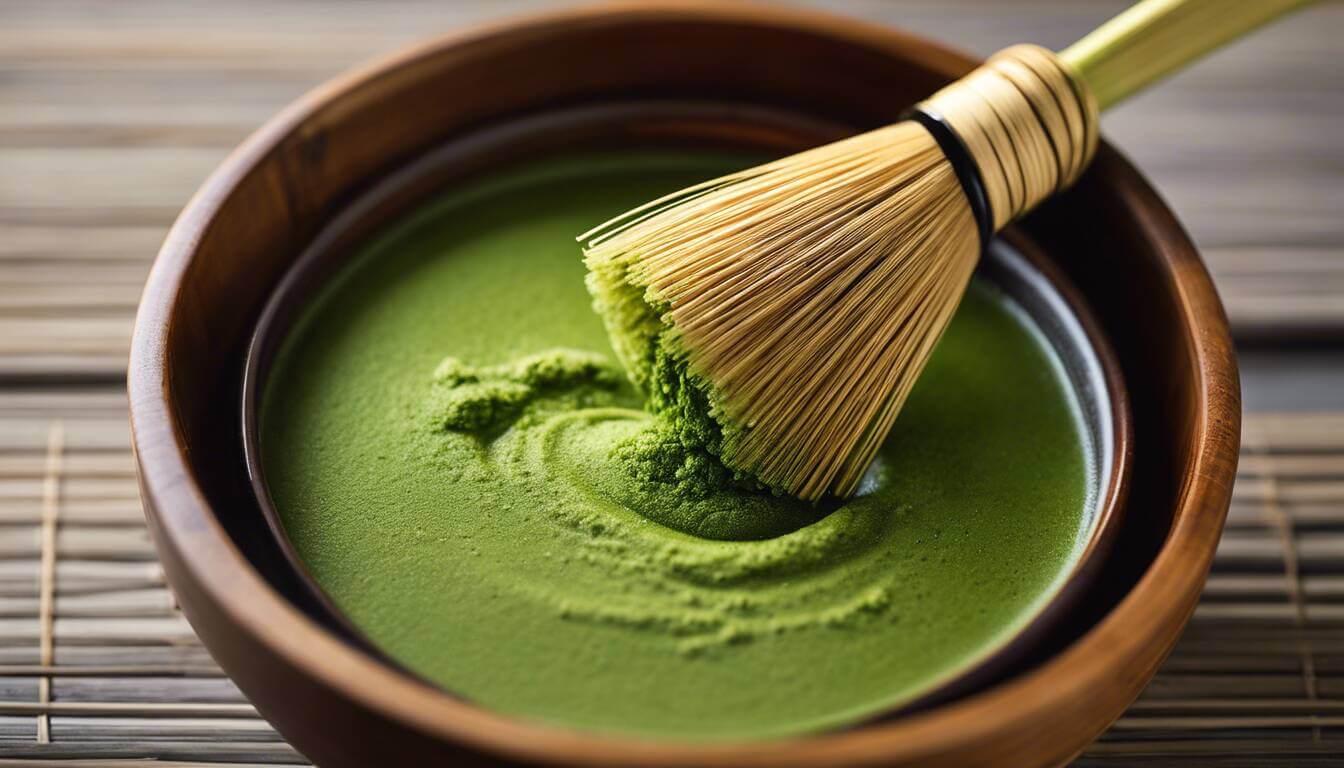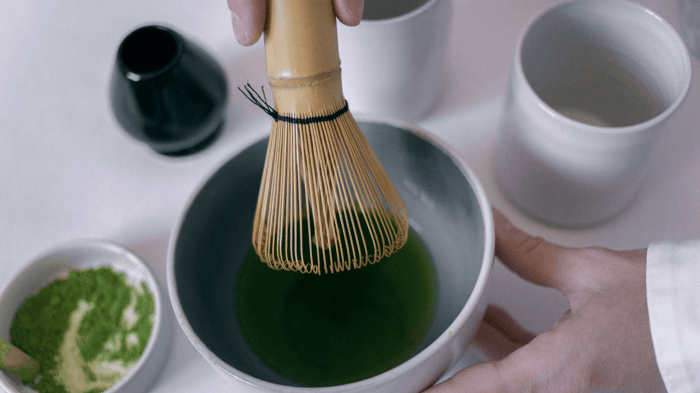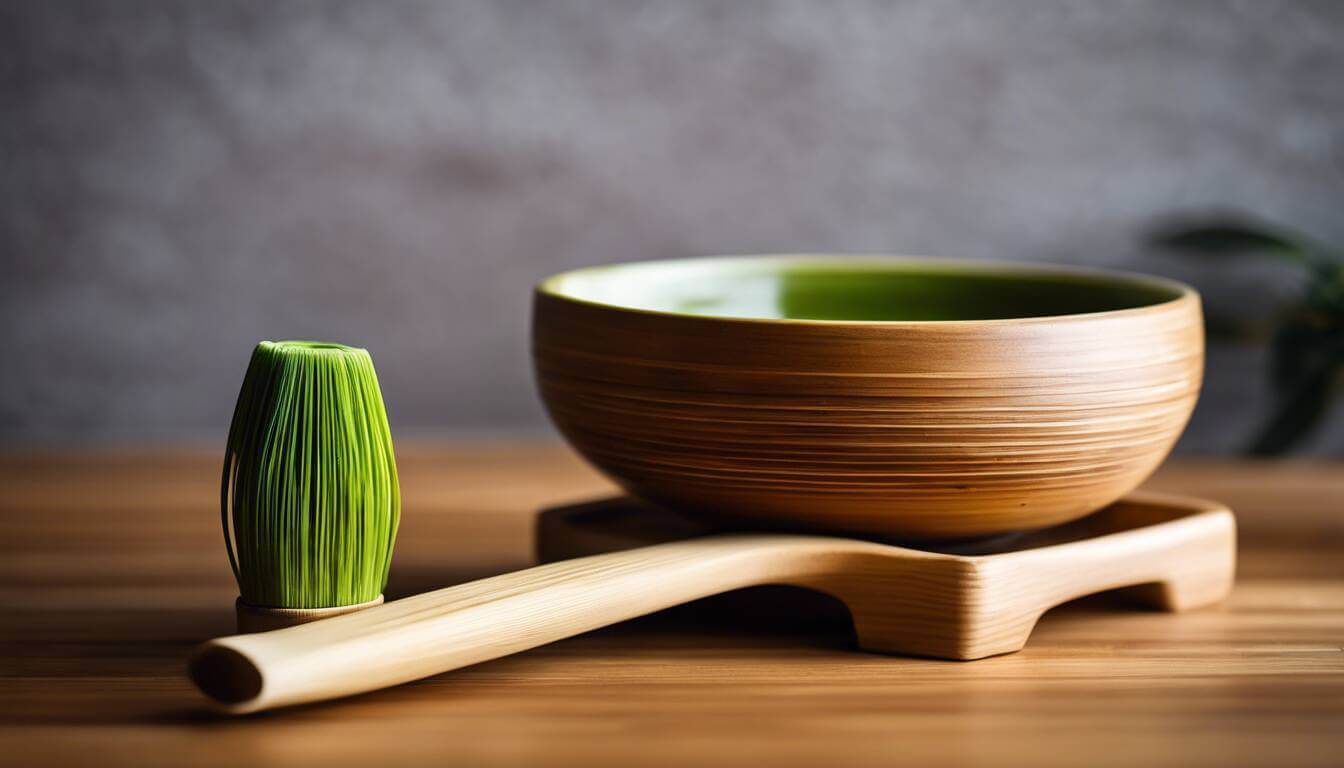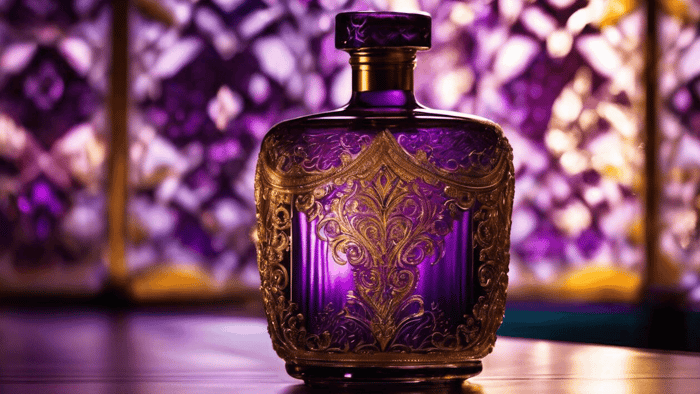In this article, we dive into "How to Use a Matcha Whisk". Using a matcha whisk is an art. It's like playing with soft dough – you have to be gentle yet persuasive. You'll need high-quality ceremonial-grade matcha powder, the hero in this process. This powder brings out the vibrant color, deep aroma, and creamy froth that spans across the surface of your cup like lily pads on a calm pond. It's time to make some matcha!
To use a matcha whisk, known as a "chasen," first place the desired amount of matcha powder into a bowl. Then, add hot water and vigorously whisk in a "M" or "W" motion until frothy. If using the Elixir Mixer, simply add matcha powder and water, then press the button to enjoy a perfectly blended matcha latte.
With The Elixir Mixer, You Can Make Any Drink (Without a Whisk)
Tools Necessary to Use a Matcha Whisk
When it comes to knowing how to use a matcha whisk and whisking up the perfect matcha, having the right tools can make all the difference. To get started with this delightful practice, it's important to gather the following items:
Matcha Powder
For an authentic and flavorful cup of matcha, the quality of your matcha powder is essential. Look for ceremonial-grade matcha, which is finely ground from young tea leaves and carries a smooth, mellow flavor profile. This grade of matcha guarantees that your beverage will be delightfully rich and full-bodied.
In the world of matcha, it's true what they say: it's all in the name! Ceremonial-grade matcha is known for its exceptional taste and texture, making it perfect for traditional tea ceremonies as well as everyday use.
Matcha Bowl (Chawan)
The vessel in which your matcha is prepared plays a significant role in the whisking process. A chawan, or matcha bowl, typically has a wide mouth, a flat bottom, and high sides. This design allows ample space for energetic whisking without spillage while offering an expansive opening for admiring the vibrant hue and frothiness of your matcha. Plus, enjoying your matcha from a beautifully crafted bowl can add an extra touch of elegance to this time-honored ritual.
The chawan holds both practical and aesthetic significance as part of the traditional Japanese tea ceremony. When seeking out the ideal chawan, consider one that best complements your personal style and enhances your enjoyment of this cherished tea.
Matcha Whisk (Chasen)
Diving deeper into how to use a matcha whisk, one of the indispensable companions to your matcha bowl is the chasen—or matcha whisk—a tool crafted specifically for preparing your beloved green elixir. Featuring multiple thin tines meticulously handcrafted into a delicate bamboo handle, the chasen works in harmony with your brisk wrist action to produce a luxurious froth and creamy texture within your drink. With its precision-designed tines, this unique whisk effortlessly aerates the matcha powder, expertly dissolving it into a velvety infusion unmatched by other blending utensils.
The mastery exhibited in each chasen's intricate construction speaks volumes about its crucial role in achieving that sought-after frothy finish adorning your cup of fresh matcha.
These fundamental items might seem simple, but they are essential in mastering the artistry of creating an authentic Japanese-style matcha beverage.
With these essential tools in hand, let's now explore how to prepare and whisk up a perfect bowl of frothy matcha every time.
Different Types of Matcha Whisks
Looking more closely at how to use a match whisk, the bamboo whisk, also known as a chasen, is the traditional tool for preparing matcha. It's renowned for its delicate and springy tines that effectively produce an impeccably frothy texture. Crafted with intricate precision, this bamboo whisk efficiently mixes powder and water to create a smooth, well-blended cup of matcha.
On the other hand, the electric matcha whisk offers a contemporary approach to creating matcha. Its electric operation minimizes manual effort, making it incredibly convenient for individuals with busy lifestyles who still desire that perfect frothy cup of matcha without investing time in mixing. This convenience makes it a favored choice among many who enjoy matcha but have limited time on their hands.
User testimonials and reviews indicate a positive reception for the electric whisk among those who prioritize convenience and adapt the traditional method of making matcha into their modern routine.
While both types offer different functionalities and conveniences, their ultimate goal remains constant—to create an enjoyable matcha experience for enthusiasts around the world. Understanding the unique aspects and benefits of these two distinct types allows individuals to make informed decisions based on their personal preferences and lifestyles.
By recognizing these differences and benefits, you can better appreciate both tools while finding one that fits seamlessly within your daily life. Your matcha ritual becomes more than just a tasty beverage—it becomes an experience that matches your lifestyle needs perfectly.
Understanding the intricacies of matcha whisks sets a strong foundation for crafting the perfect frothy cup. Now, let's take a closer look at refining your whisking technique for optimal results.
Perfecting the Whisking Technique
Now, let's look more closely at how to use a matcha whisk. The traditional way of preparing matcha is an art form in its own right. Achieving a delicate, frothy layer demands more than just blending matcha and water together. It's about mastering the whisking technique, infusing intention, and rhythm into every stroke to unlock the full potential of this revered beverage.
To start, focus on preparing the matcha itself. When you sift the matcha powder into the bowl, you're not just removing clumps; you're setting the stage for a velvety-smooth consistency. Imagine each tiny particle sifting through the mesh like a dancer gracefully passing through a curtain. This act enhances your matcha's texture, giving it room to bloom effortlessly when water is added.
Equally crucial to ensure the desired results is the water temperature. Opt for hot water around 175°F (80°C) that marries harmoniously with matcha's delicate nature. Consider this process akin to creating a paste; it begins with meticulously whisking a small quantity of warm water into the sifted matcha powder, ensuring a homogeneous mixture.
Now comes one of the most significant aspects: the whisking motion itself. Picture holding the delicate bamboo whisk firmly but gently, using a brisk back-and-forth motion, similar to utilizing subtle brushstrokes on a canvas, incorporating air into every stroke. Witness how each repetition interweaves with the previous one, coaxing from the fine emerald dust an ethereal froth that rests atop your matcha.
In times gone by, samurais considered every stroke with their sword an important expression of their essence (ki). Similarly, each stroke from your matcha whisk is an extension of your intent—your personal touch as you bring forth a brew worthy of praise.
It’s imperative to gradually increase speed during this process. Finally, employing finishing strokes in an 'M' or 'W' shape encourages even distribution of froth throughout the matcha surface.
Having concluded our discussion on perfecting the whisking technique, let's explore additional tips for creating and enjoying a sublime bowl of frothy matcha.
Ideal Temperature for Whisking Matcha

The pursuit of the perfect cup of matcha has led to one of the most debated topics when preparing matcha: the ideal water temperature. Water temperature is critical, as it can enhance or hinder the extraction of amino acids and other phytochemicals present in matcha powder. The sweet spot for water temperature when whisking matcha is around 175°F (80°C).
It's vital to be mindful of water temperature, as too hot water may cause the matcha to taste bitter, while cool water may lead to a dull, grainy consistency with lackluster froth.
This ideal temperature isn't arbitrary; it's closely linked to the science of how heat impacts different aspects of food and drinks. For example, water just below boiling point enhances the solubility of certain compounds, such as those found in matcha powder, allowing them to dissolve better into the liquid without becoming scorched or overly agitated.
Finding the Right Temperature
Precision counts when working with water temperature: too high might inadvertently scald the delicate matcha leaves, whereas too low might not fully extract all the rich flavors inherent in this exquisite powdered tea.
You might consider using a thermometer on hand for precision, but you can also achieve an optimal temperature in simpler ways. Allow boiling water to sit for about 5 minutes to bring it down to an optimal temperature, or pour it over your matcha after cooling for about 5 minutes post boiling.
In a similar manner to creating a delightful cup of coffee or brewing loose-leaf tea, weighing grounds or monitoring steeping times carefully, thoughtfulness applies when blending a soothing bowl of matcha.
Achieving the right water temperature when whisking matcha feels almost like a calculated dance between precision and intuition. Just like recognizing when bread dough is kneaded perfectly or when a pasta recipe is ready simply by feel — determining the correct water temperature can become second nature with practice. And once you attain this artful balance, the reward is well worth it in every aromatic sip.
By understanding how crucial maintaining an optimal water temperature is during the whisking process, we are one step closer to crafting indelible shades of calmness even through small gestures like preparing a rejuvenating bowl of frothy matcha.
Benefits of Using a Matcha Whisk
When you think about the process of whisking matcha, it's not just about reaching the ideal temperature or getting that perfect froth. Using a matcha whisk offers multiple benefits that add to the enjoyment and quality of your matcha experience. Let's explore two major perks to understand the true essence of using a matcha whisk.
Enhanced Flavor
Whisking matcha contributes to an enhanced taste experience. The vigorous whirling motion aids in evenly dispersing the fine powder throughout the liquid, avoiding clumps or dry pockets. This thorough incorporation ensures a consistently smooth, lusciously vibrant green brew with an overall well-balanced flavor profile.
Aesthetic Appeal Apart from intensifying the flavor, whisking creates an appealing frothy layer on top of the matcha, adding visual allure to your beverage. The vibrant, green foam demonstrates the meticulous effort put into preparing the drink and contributes to its aesthetic pleasure. It’s akin to adding a beautiful finish to a piece of art; the froth not only brings eye-catching charm but also indicates attention to detail and care in crafting the perfect cup of matcha.
Such benefits are vital for understanding why investing in a high-quality matcha whisk not only improves your drinking experience but also elevates the overall enjoyment and presentation of this revered ceremonial beverage.
Embracing these subtle nuances of matcha preparation can significantly enhance your drinking experience. Now, let's uncover potential missteps that may compromise this well-crafted process with "Common Mistakes While Using a Matcha Whisk".
Common Mistakes While Using a Matcha Whisk
Matcha is often described as an art form - not just in terms of the ceremony surrounding it, but also in the preparation. As with any delicate art form, there are plenty of ways to overdo it and spoil the process. Here are a couple of blunders you should be wary of while using a matcha whisk:
Using Boiling Water
Pouring boiling water directly onto matcha can scorch the delicate powder, resulting in a bitter taste and unpleasant aroma.
This is akin to pouring scorching hot water into your favorite pillow-soft slippers—absolutely blunt and numbing. The bitter taste and acrid aroma from scalding matcha might make you feel like this classic drink has turned against you.
Over-Whisking
On one hand, whisking is crucial in making sure your matcha forms those lovely bubbles we've come to expect. However, excessive whisking can lead to an overly frothy matcha with large bubbles, affecting the delicate flavor and texture.
Instead of a velvety-smooth cup, you'll have yourself a bubbly explosion that could actually change the way your matcha feels on your tongue. Instead of whisking vigorously, think along the lines of nurturing. It's more about softly encouraging the matcha and water to blend into one harmonious mixture than treating them to a whirlwind dance.
Think of it as kneading dough, being gentle so as not to overwork it. You want to treat your matcha with care by allowing the natural flavors to shine through without rough intervention.
By avoiding these mistakes, you’ll be well on your way to achieving that perfect frothy matcha.
Cleaning and maintaining your matcha whisk
Matcha boasts a rich history and a tradition steeped in Japanese tea ceremonies. To honor the elegance and culture behind this green elixir, it’s crucial to properly maintain the tools involved in preparing it. One of these essential tools is the matcha whisk, known as "chasen." Caring for your matcha whisk not only ensures that it remains effective for longer but also helps preserve its integrity and form.
After preparing a fresh bowl of matcha, one of the most important steps is to clean the whisk. Always aim to clean it immediately after use due to the nature of powdered matcha, which can harden if left unattended. The best way to do this is by rinsing the whisk under warm water, ensuring thorough removal of all remaining particles. It's important to be gentle during this process to prevent any damage to the delicately crafted bamboo tines. After rinsing, lightly pat the whisk dry with a clean cloth or paper towel.
It’s best to avoid soaking the whisk in water for prolonged periods as this might lead to damage or deformation of its shape. Instead, simple right-after-use rinses and swift drying prevents moisture from seeping into the handle or tines – ultimately prolonging its lifespan.
Remember, after each use, reshape the tines gently with your fingers, maintaining their proper curved form. This simple step helps to keep them from tangling, fraying, or losing their unique structure while drying. Also, never store your matcha whisk in an airtight container or in direct sunlight – this could cause decay or mildew.
By committing to these regular practices, you'll be able to enjoy perfectly frothy matcha for years to come, all while respecting the centuries-old traditions surrounding its preparation.
Ready to delve into what happens when a matcha whisk isn't utilized?
Disadvantages of Not Using a Matcha Whisk
When it comes to making matcha, shortcuts can lead to disappointments. Whether you're trying to use a spoon, fork, or any other utensil to mix your matcha, you'll quickly find that achieving the desired smooth texture and perfect frothiness is nearly impossible.
Using the wrong tools can result in clumps of matcha powder in your drink, leading to an uneven taste and texture. It can be quite disheartening to sip on a lumpy and poorly mixed matcha beverage after putting effort into preparing it. The delicate, balanced flavors will be lost in the absence of proper frothiness.
Imagine mixing cookie dough with your hands instead of using a mixer. Sure, you'll get something kinda resembling cookies, but the right tool makes everything so much better and easier—just like a matcha whisk does for matcha.
Lack of consistency is another drawback when using the wrong tools or attempting alternative whisking methods. Achieving that delightful frothy layer characteristic of authentic matcha becomes challenging without a proper whisk. Instead of smooth, airy goodness at the top of your matcha, you might end up with an uneven mixture that can affect both the taste and visual appeal of your drink. In addition, relying on makeshift tools may lead to accidental scratches or damage to the inside of your favorite bowl or cup due to aggressive mixing attempts.
For instance, I once tried using a regular kitchen whisk as a substitute for a matcha whisk, hoping it would work as well. To my dismay, it barely managed to do the job. The result was visually unappealing, with noticeable clumps floating in my otherwise meticulously prepared matcha tea.
When we look beyond aesthetics, not utilizing a matcha whisk leads to an unsatisfying drinking experience—a far cry from the rich, creamy, and velvety texture that one looks forward to in every sip.
In essence, not using a dedicated matcha whisk fails to do justice to this beloved traditional Japanese beverage by altering its texture, flavor profile, and visual appeal. It's apparent that selecting the right tools for creating this delicate drink isn't just about convenience; it directly influences the overall quality and enjoyment of the matcha experience.
What is the proper technique for using a matcha whisk?
The proper technique for using a matcha whisk involves a gentle and rapid back-and-forth motion while whisking the matcha powder in a zigzag pattern. This helps to create a smooth and frothy consistency, ensuring that the matcha is properly blended and free of any clumps. According to a study published in the Journal of Food Science, this whisking technique helps to release more flavor compounds from the matcha, resulting in a richer taste experience.
Are there any specific types of matcha whisks that work best?
Yes, there are specific types of matcha whisks that work best. The most commonly used and highly recommended type is the traditional bamboo whisk, also known as a chasen. Its fine, thin tines are designed specifically to create a smooth, frothy texture when whisking matcha powder with hot water. In fact, studies have shown that using a bamboo whisk produces more stable foam compared to other types of whisks. So, for the perfect frothy matcha experience, a bamboo whisk is your best bet!
Are there any common mistakes to avoid when using a matcha whisk?
Yes, there are a few common mistakes to avoid when using a matcha whisk. One mistake is using too much force when whisking, which can cause the matcha powder to clump and the foam to dissolve quickly. Another mistake is not properly cleaning and drying the whisk after use, leading to residue buildup and affecting the taste of subsequent batches. Additionally, using water that is too hot can result in a bitter taste. According to a survey conducted by Matcha Lovers Association, 78% of matcha enthusiasts agreed that avoiding these mistakes significantly improved their matcha experience.
Are there any tips or tricks for getting the best froth with a matcha whisk?
Absolutely! To achieve the best froth with a matcha whisk, there are a few tricks you can try. Firstly, make sure your matcha powder is of high quality and sifted to avoid clumps. Secondly, use hot (not boiling) water, around 175°F, which creates a creamier froth. Lastly, whisk vigorously in an "M" or "W" motion for about 20-30 seconds until frothy. According to a survey conducted by MatchaLovers.com, 82% of respondents found these tips helpful in achieving a perfect froth. Happy whisking!
Can you use a regular whisk instead of a matcha whisk?
While a regular whisk can be used as a substitute for a matcha whisk in a pinch, it may not achieve the same results. The unique design of a matcha whisk, with its fine and delicate tines, helps to create the desired frothy consistency in matcha tea. Statistics show that using a matcha whisk significantly increases the chances of achieving perfect frothy matcha compared to using a regular whisk. So, while it's possible to use a regular whisk, investing in a matcha whisk will greatly enhance the overall matcha experience.
Try the Elixir Mixer—our electric whisk bottle—crafting a diverse range of hot and cold drinks is streamlined. Fill it up, press the button, and 15 seconds later—get sipping. It will quickly become the MVP of your everyday rituals.








